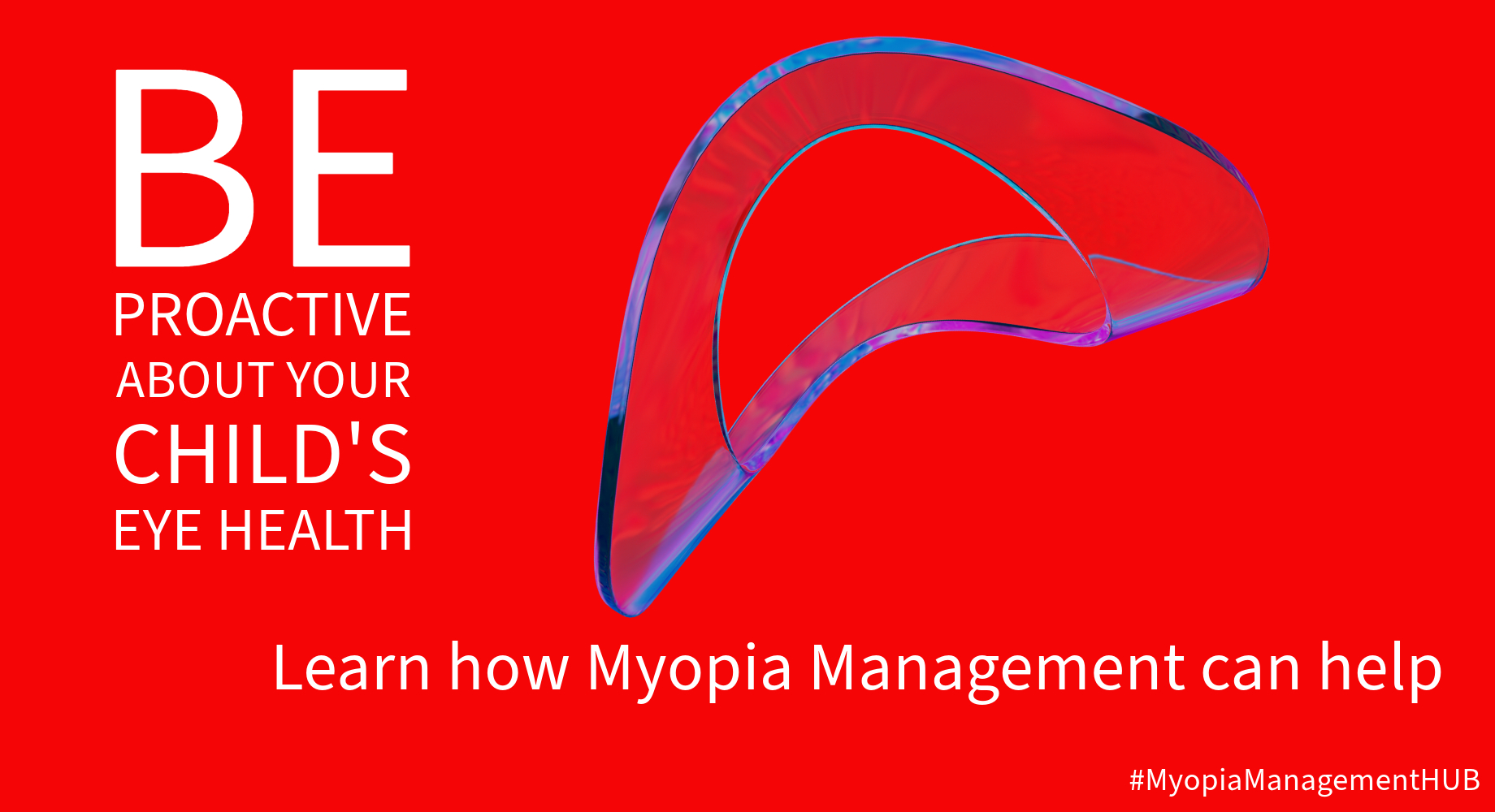By Dr. Gilbert Nacouzi
Each time I try to emulate peer myopia management practitioners building a marketing strategy for the myopia management practice, I find similar marketing patterns being repeated and employed among eye care professionals. There is absolutely not a single doubt that those patterns of marketing strategies have yielded tremendous results in Optometry. In fact, those are marketing practices that have been developed by practice owners who are demonstrating excellent entrepreneurial behavior time after time and are remarkably paving the way to other practitioners to employ and improve those strategies. In this article, I try to delve first into listing what is commercial marketing that allows myopia management practitioners to market their practices and then define social marketing strategies for myopia management trying to demonstrate how commercial marketing fits into social marketing the myopia disease.
Social media and other content-sharing platforms offer countless chances for online interaction these days. Our daily lives are largely reliant on the internet, which provides the best means of obtaining news and information. As a matter of fact, eight out of ten individuals state that they get most of their news from digital devices, such as social media apps or online news sources (Shearer, 2021). Health experts and eye care professionals in particular can use social marketing and other health promotion methods at different levels in their marketing strategy.
Social marketing, on the other side, employs marketing techniques typically used in commerce to influence behavior regarding social issues. Crafting a social marketing strategy enables a more targeted and effective approach in communicating with specific audiences, leading to improved outcomes. It’s essential to differentiate social marketing from social media, as the latter, including platforms like Facebook and Twitter, serves as tools within the broader framework of social marketing plans to achieve specific objectives.
Optometry practices are implementing different commercial marketing strategies and social media strategies to effectively raise awareness, attract patients, and establish themselves as a trusted provider in the community. Here are a few of them:
- Patient Education during Exams: Utilize exam time to educate patients and parents about myopia management, emphasizing the risks associated with untreated myopia and the benefits of early intervention (Kazmi, 2022).
- E-Blast Marketing: Target e-blasts to the patient base, highlighting new treatment options or services. Segment lists to focus on patients who may benefit from myopia management (Kazmi, 2022).
- Blog & Vlog Series: Establish a regular blog and vlog series to provide in-depth information about myopia, its prevalence, associated risks, and available treatment options. Consistent content creation builds credibility and engages the community (Kazmi, 2022).
- Staff Training and Education: Educate office staff about myopia management services and treatments. Provide materials and resources to facilitate patient education and engagement. Ensure staff members can effectively communicate the benefits of myopia management (Aleman-Moheeputh,2021).
- Word-of-Mouth Marketing: Encourage satisfied patients to spread the word about the practice’s myopia management services. Leverage patient testimonials and success stories to build trust and credibility (Aleman-Moheeputh,2021).
- Networking with Local Optometrists: Foster collaborative relationships with other eye care professionals to exchange referrals and support. Participate in local events and professional organizations to expand the practice’s network (Aleman-Moheeputh,2021).
- Online Presence and Social Media: Maintain an updated Google business listing and actively engage on social media platforms. Share informative content, success stories, and practice updates to stay top-of-mind among patients and colleagues (Aleman-Moheeputh,2021).
Andreasen (1995), in the preface to “Marketing Social Change,” defines social marketing as applying commercial strategies to address various socially significant behaviors, like drug use and smoking. This approach, drawing from established concepts and techniques, has substantial potential to address significant societal issues if effectively utilized. The “proven techniques” encompass methods from behavioral theory, persuasion psychology, and marketing science. These techniques involve leveraging behavioral theory to influence health-related behaviors, evaluating audience receptivity to messages, and strategically marketing messages to drive behavior change using the “four Ps” of marketing (Kotler & Lee, 2008):
1- Behavior Change: Initiate campaigns targeting behavior change towards myopia prevention, emphasizing the importance of outdoor activities and reducing screen time for eye health.
2- Customer Research: Conduct comprehensive research to understand myopia prevalence, risk factors, and prevailing attitudes towards eye health within target populations, enabling tailored intervention strategies.
3- Audience Segmentation: By segmenting their target audience based on factors such as age, lifestyle, and eye health needs, optometrists can tailor their marketing messages to resonate with specific groups. For example, they can develop messages targeted at parents concerned about their children’s eye, the need for early eye exam, emmetropes prevention ways, pre-myopic management tools, myopia, and high myopia management methods.
4- Marketing Mix:
· Product: Position outdoor activities as desirable ‘products’ associated with myopia prevention, offering benefits such as improved overall health and reduced risk of vision impairment.
· Price: Address perceived barriers such as inconvenience or lack of awareness by offering incentives like free outdoor activity guides or discounts on protective eyewear.
· Place: Promote myopia prevention interventions in settings where the target audience spends significant time, such as schools, workplaces, and online platforms.
· Promotion: Utilize various channels including social media, educational campaigns, and partnerships with influencers to amplify messages and engage the audience effectively.
5- Communication Channels: Optometrists can utilize a variety of communication channels to reach their target audience, including social media, community events, and local advertising. By engaging with potential patients through these channels, they can raise awareness about the importance of regular eye exams and promote their services effectively.
6- Tailored Messages: Optometrists can create personalized messages that address the unique needs and concerns of their target audience. For example, they can highlight the benefits of specific eye care services such as myopia management at the juvenile onset.
7- Brand Building: By developing a strong brand identity that emphasizes expertise, trustworthiness, and patient-centered care, optometrists can differentiate themselves from competitors and attract more patients. Consistent branding across all marketing channels helps reinforce their reputation and build long-term relationships with patients.
8- Reinforcement of Public Health Messages: Optometrists can reinforce public health messages related to eye care, such as the importance of regular screenings and good visual habits like less screen time. By aligning their marketing efforts with broader public health initiatives, they contribute to raising awareness and promoting positive behavior change in the community.
9- Community Engagement: Optometrists can actively engage with their local community by participating in health fairs, school events, and other outreach activities. These opportunities not only allow them to educate the public about eye health but also establish themselves as trusted resources within the community.
Employing social marketing techniques in myopia management can be beneficial. Initially, within initiatives like encouraging time spent outdoor and less screen time campaigns, eye care professionals should augment media messages with brief counseling. Additionally, they can enhance outreach by offering an additional avenue for communication to engage the target audience. Lastly, leveraging their credibility as trusted sources of health information, practitioners amplify the impact of social marketing messages, extending their influence beyond conventional commercial marketing and mass communication methods.
References:
Aleman-Moheeputh, G. How To Market Myopia Management in a Retail Practice. 2021. Retrieved from: https://reviewofmm.com/best-practices-for-establishing-a-myopia-management-practice-in-a-retail-setting/
Andreasen A. Marketing social change. San Francisco, CA: Jossey-Bass, 1995.
Kazmi, A. 6 Examples of How My Practice Markets Myopia Management. 2022. Retrieved from: https://reviewob.com/6-examples-of-how-my-practice-markets-myopia-management/
Kotler, P. & Lee, N. Social marketing: Influencing behaviors for good (3rd Ed.). Thousand Oaks, CA: Sage Publications, 2008.
Shearer, E. More than eight-in-ten Americans get news from digital devices. Pew Research Center, 2021, 12.




Dr. Nacouzi is the Director of the Myopia Management HUB at Optic Nacouzi. He is an Optometrist by trade and a Doctor in Entrepreneurship. He studied BSc in Optometry, MBA in Healthcare Management, and DBA Doctorate research in Business Administration. Email him at gilbert@nacouzi.com or follow him on LinkedIn.